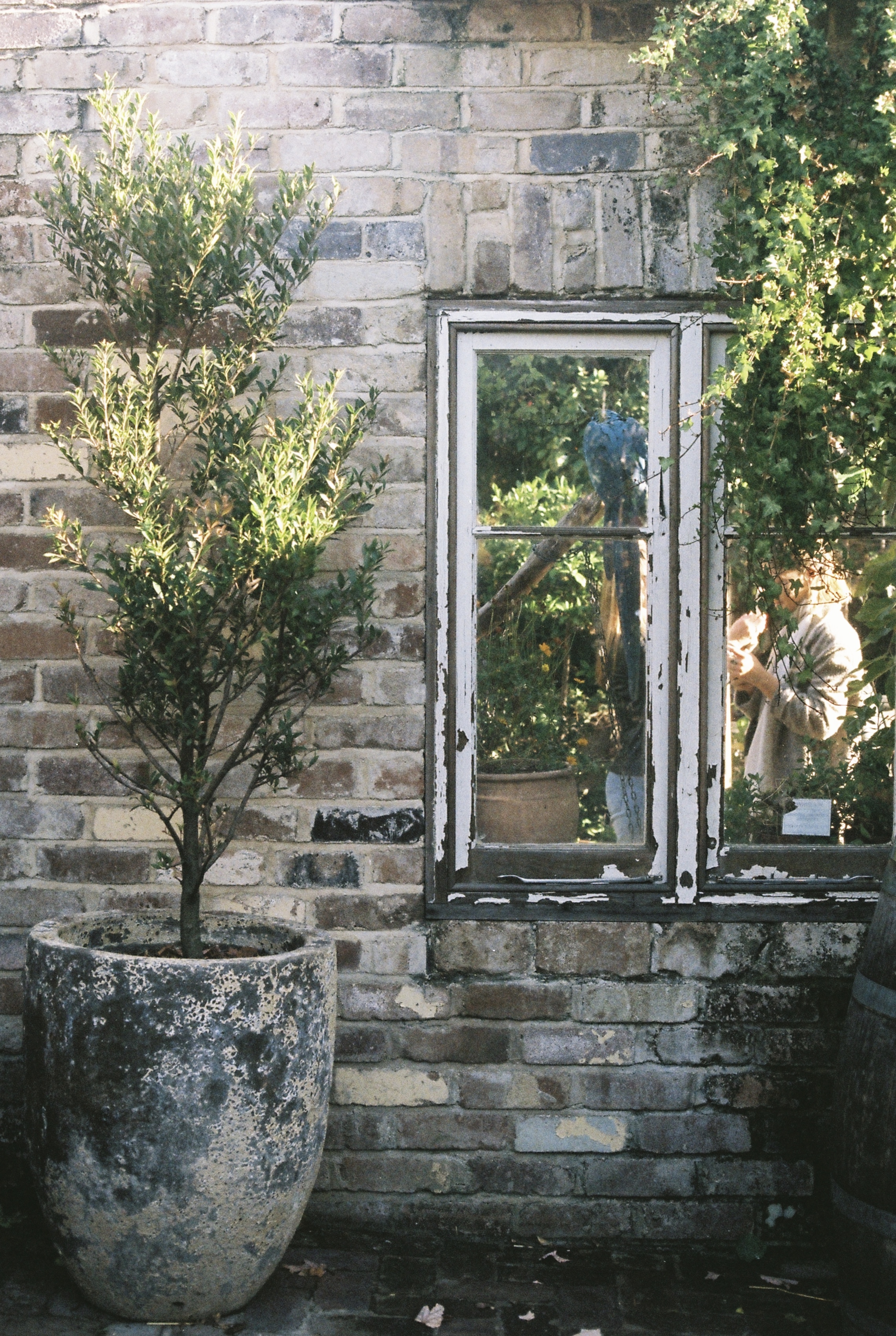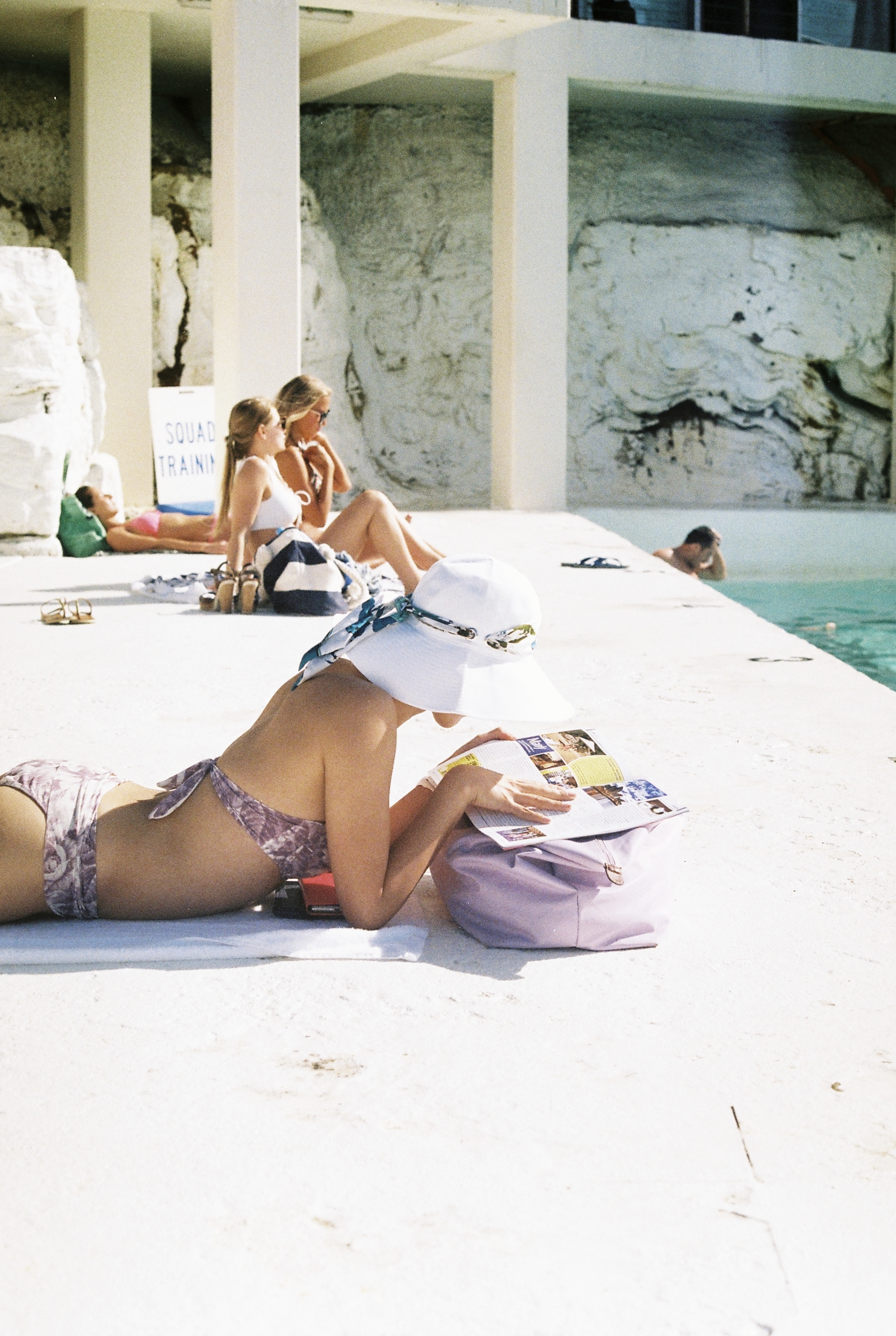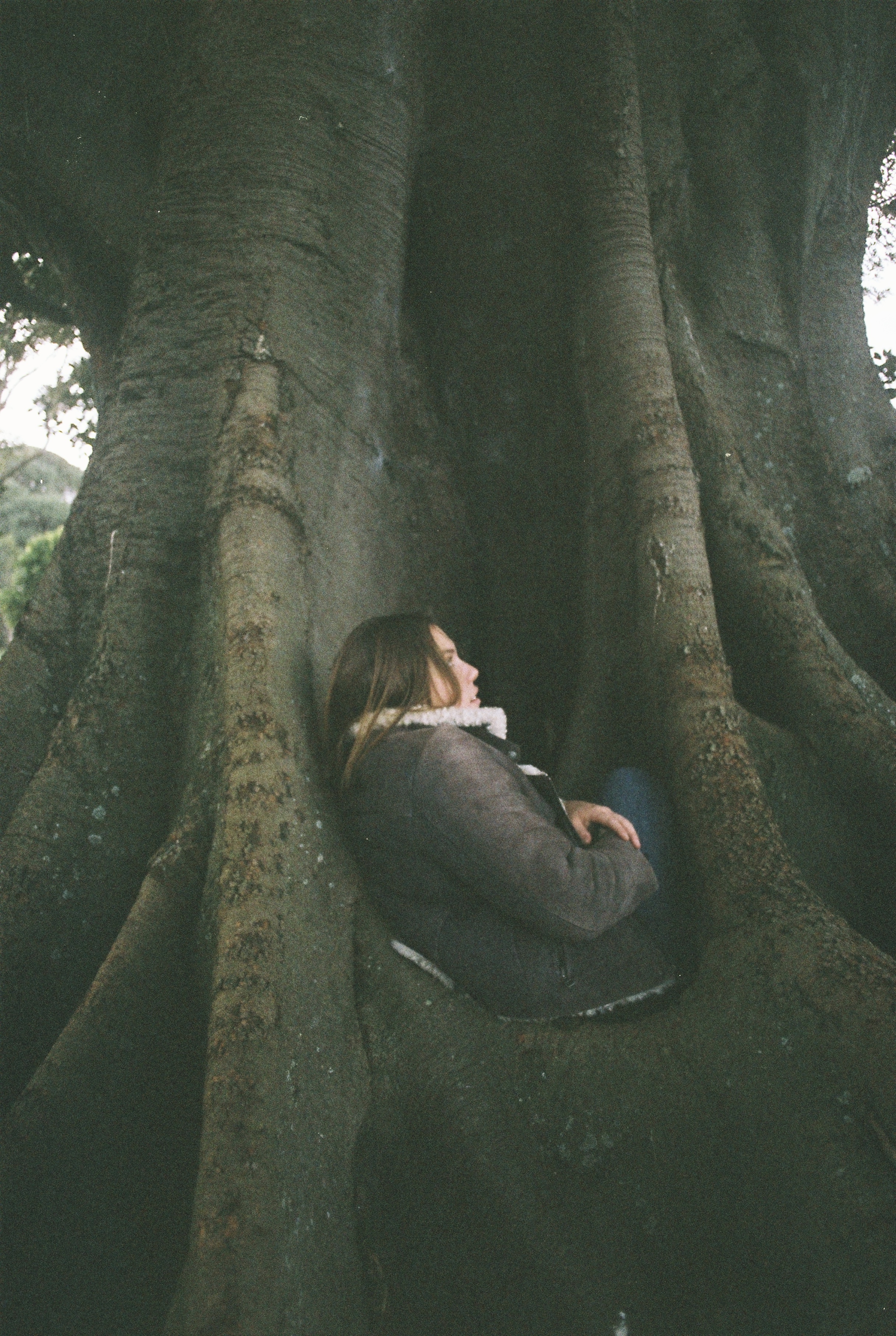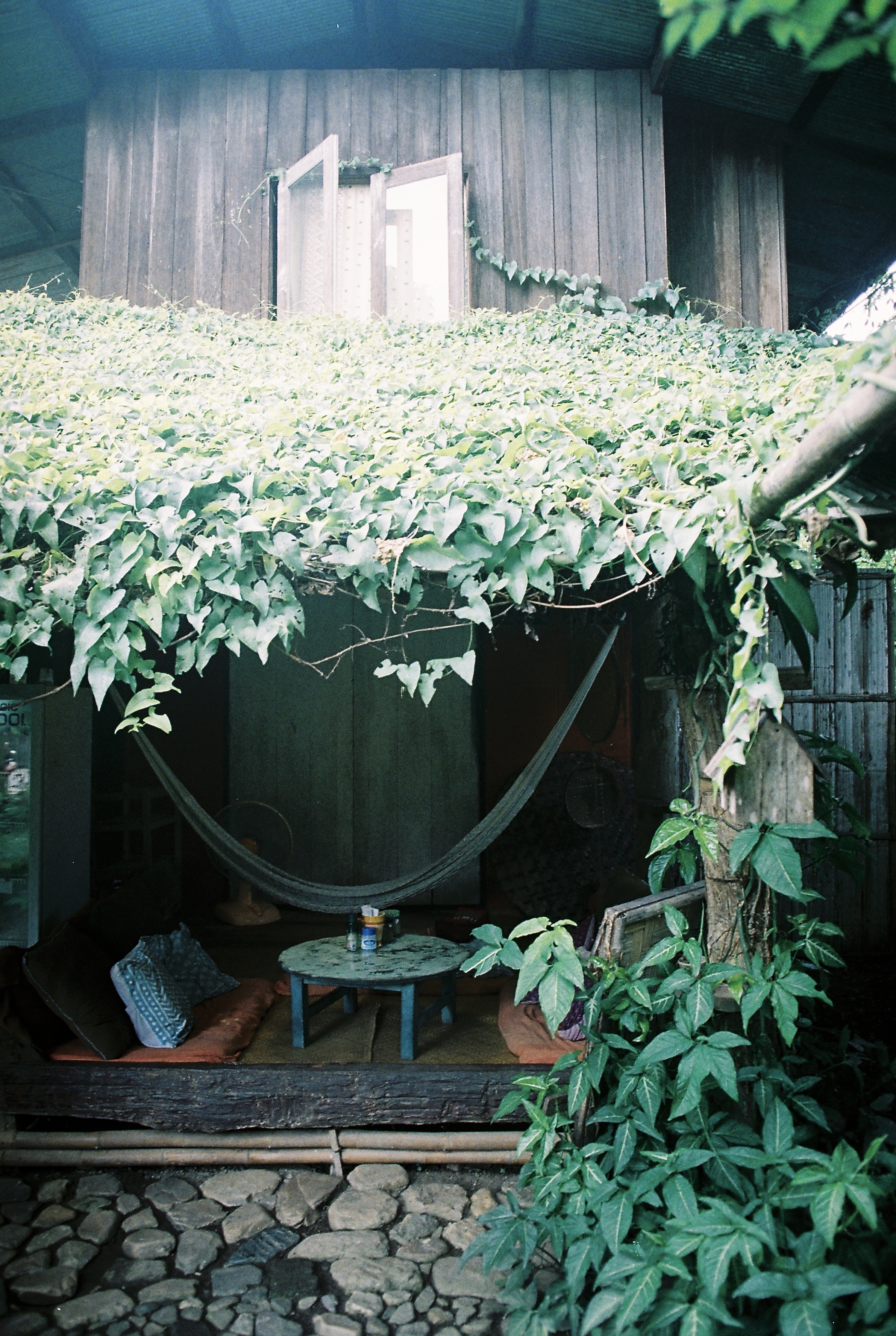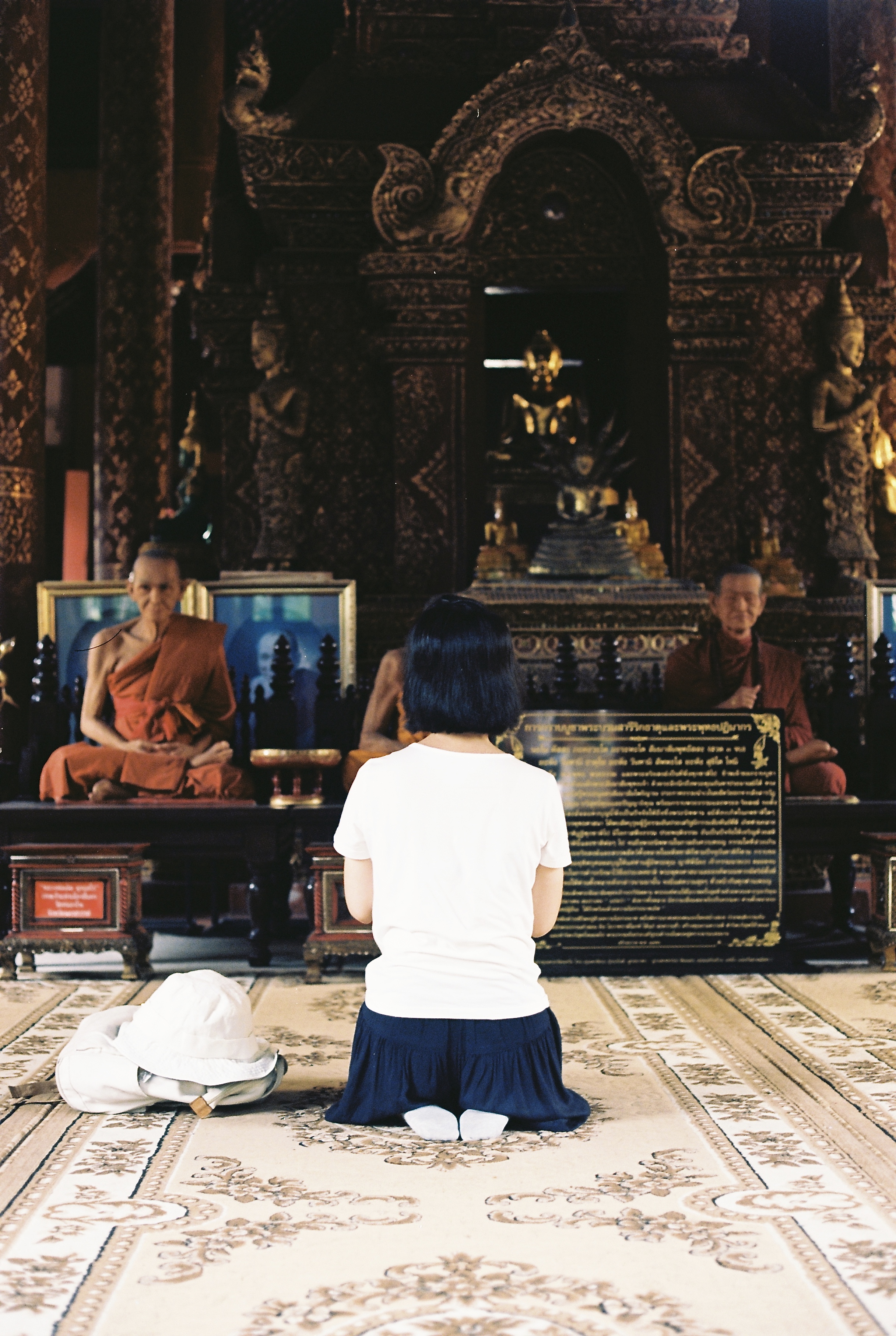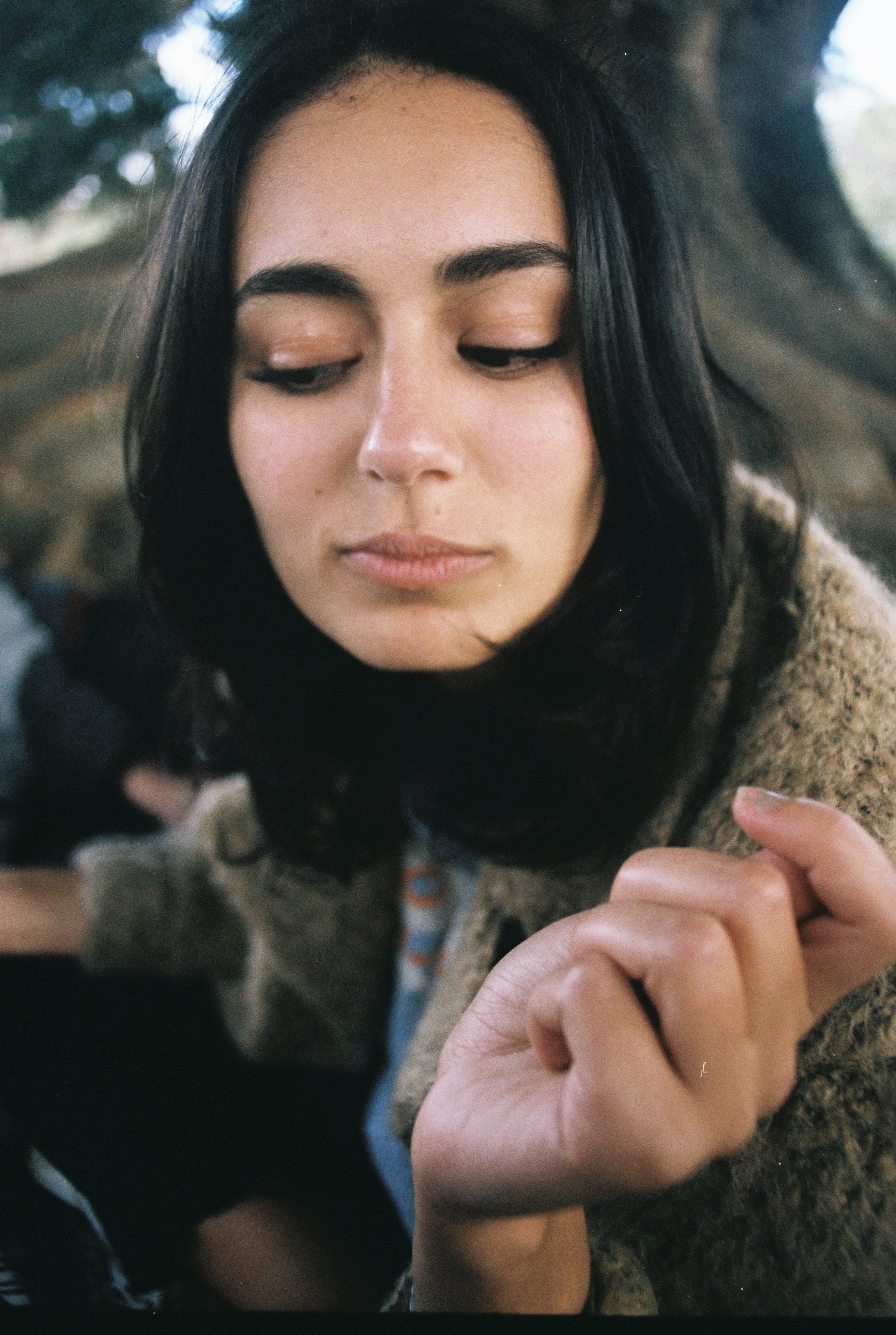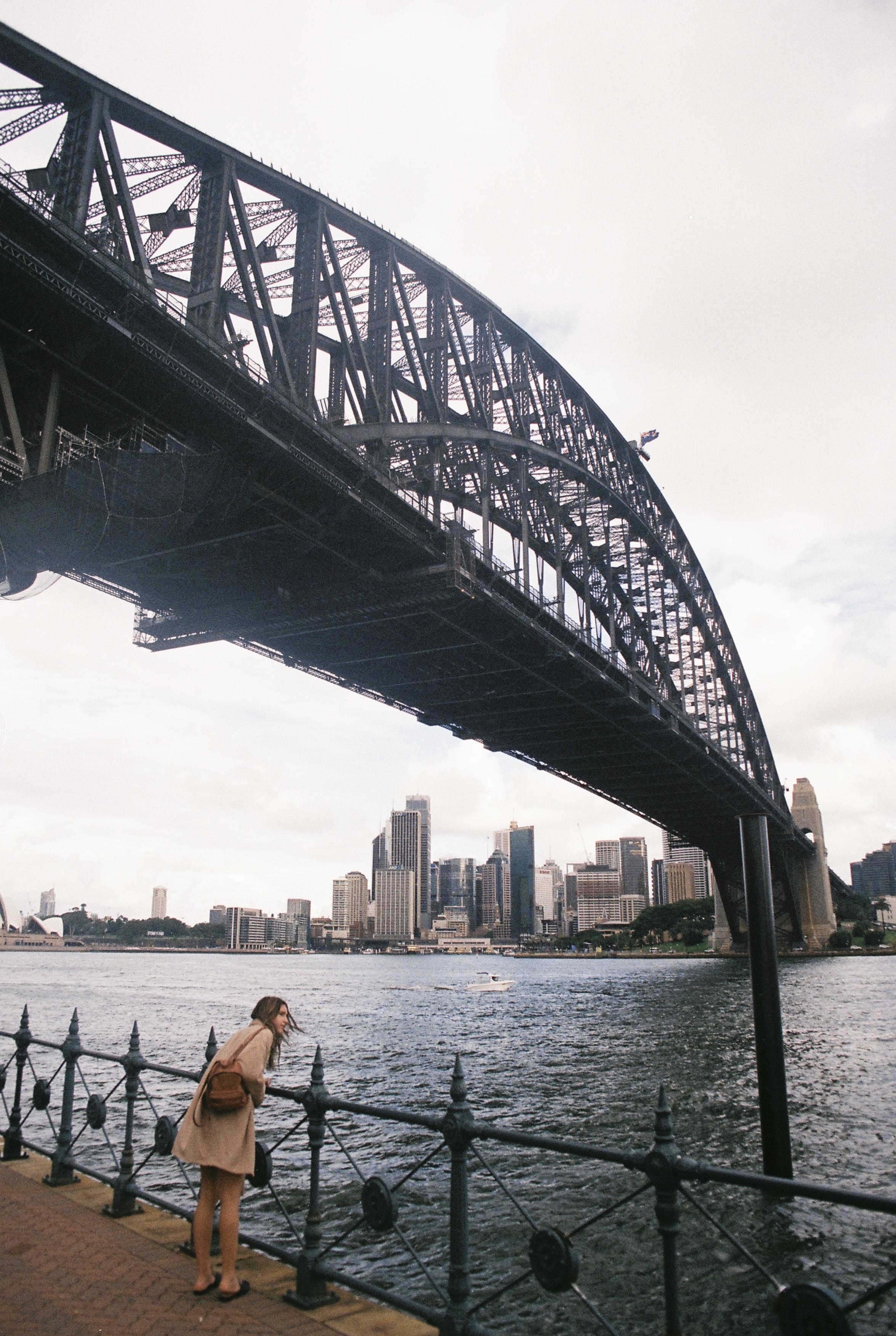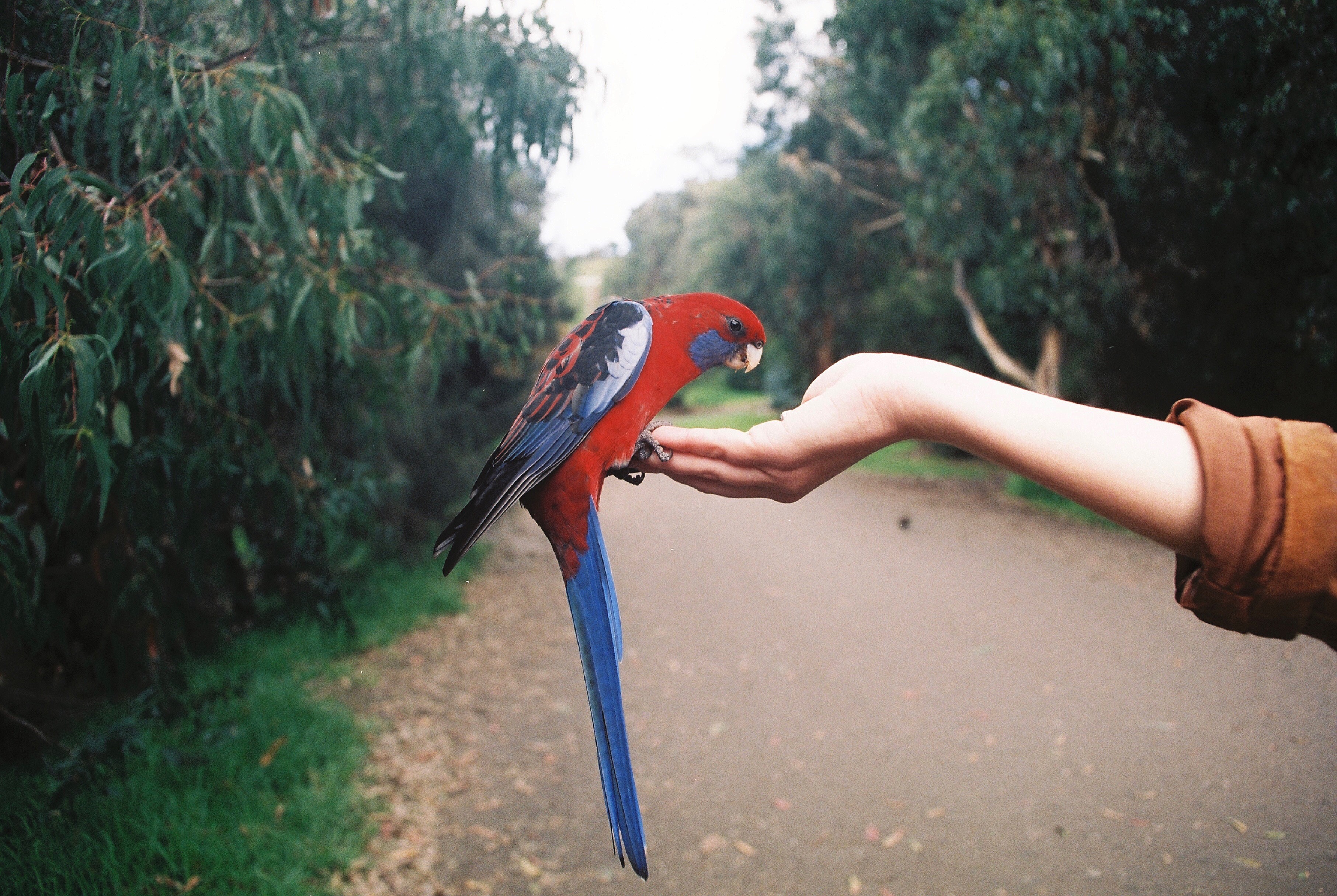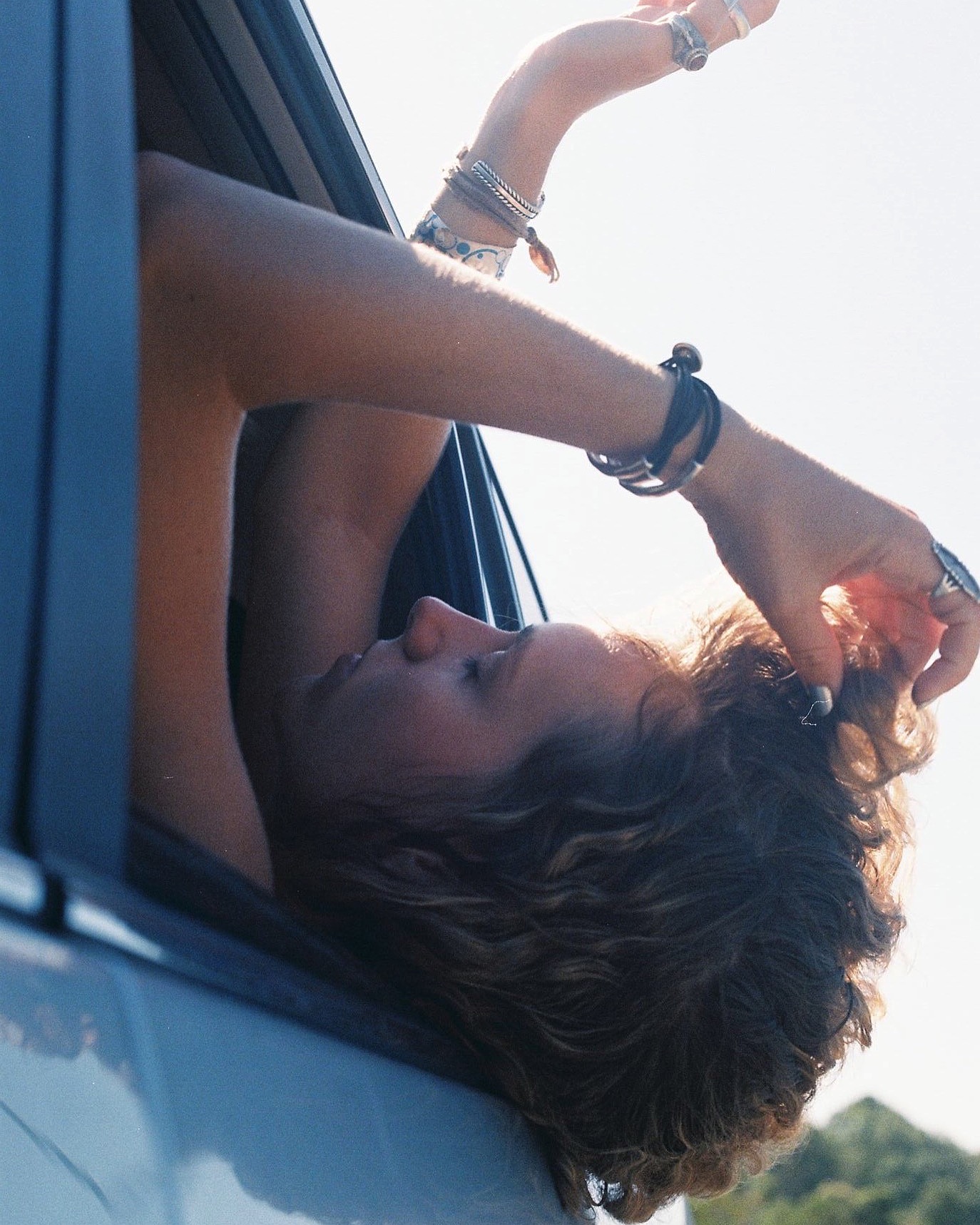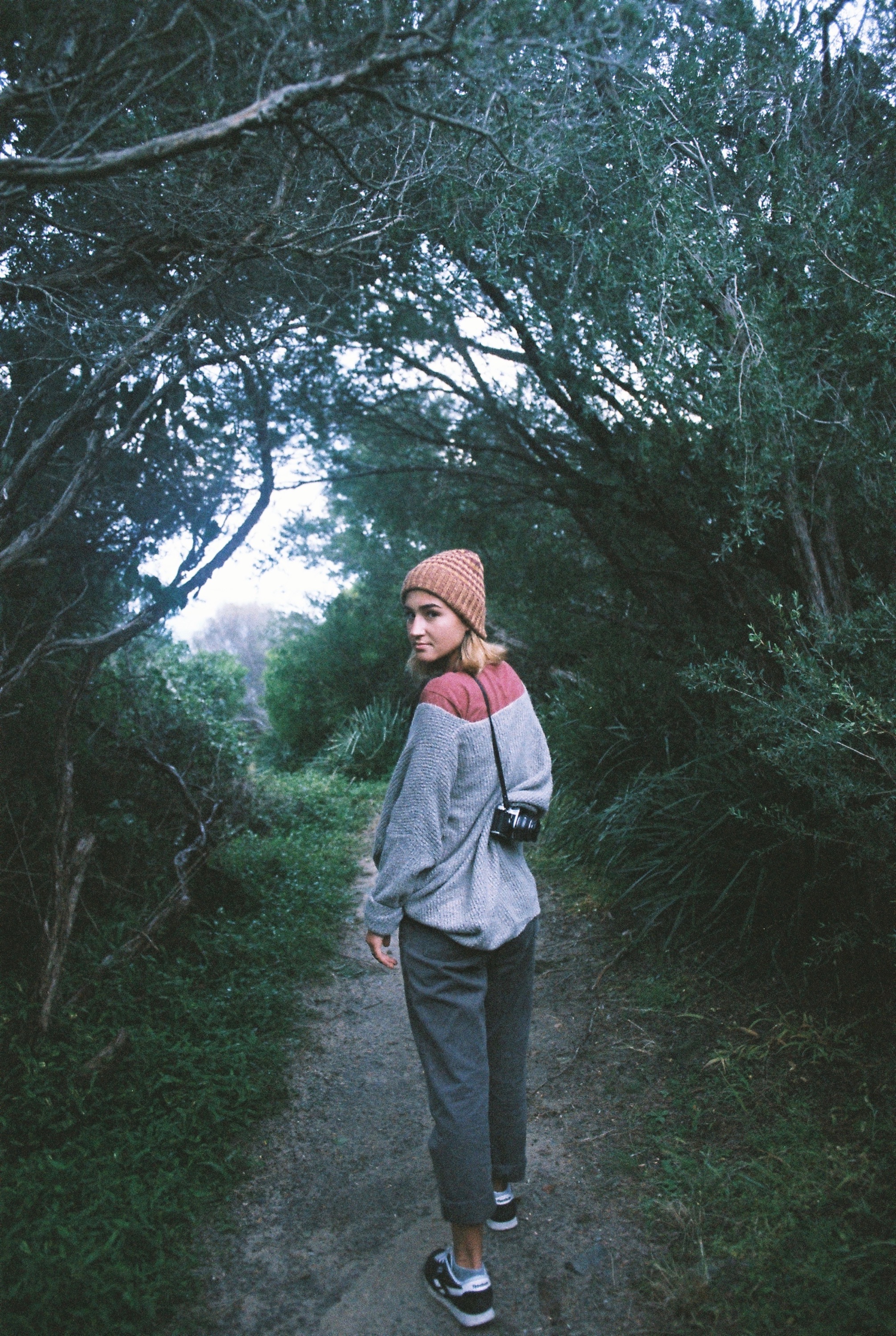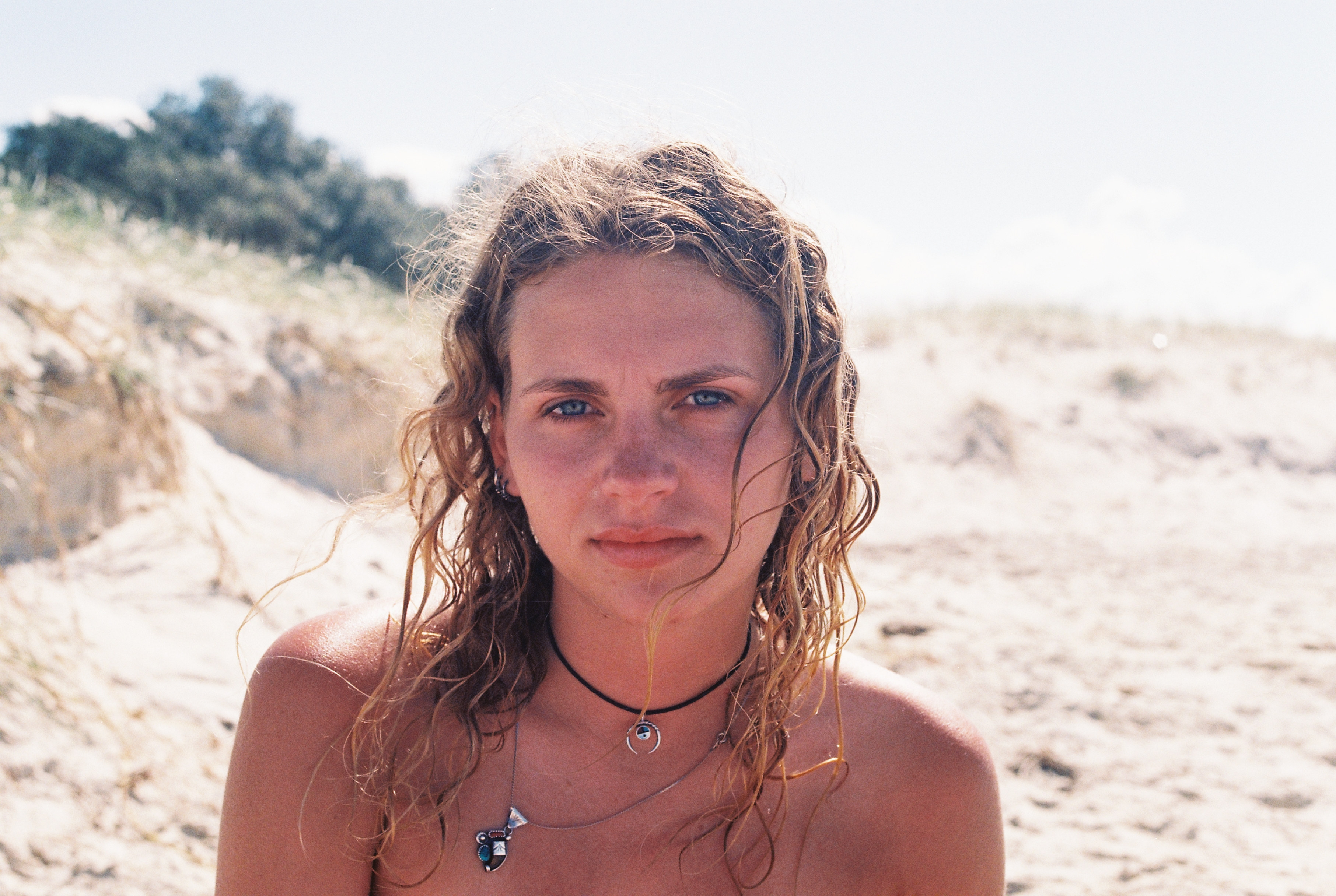
Some of the photographers we interview (and we interview a lot) grow up with photographer parents and are seemingly born to take festival photos or capture the Canadian wilderness. But there are also a fair few who have a singular transformative moment — something that changes their lives, ushering in an all-consuming photography passion. Atessa Farman falls into the second category.
Farman is a student at the University of California, Santa Cruz, where she started as a psychology major. When she entered school, she always had a camera with her — because she was attracted to the aesthetically pleasing and wanted to be able to freeze it in time. After a trip abroad her sophomore year, she finally took a photography class and her pastime became her calling. She changed majors and set to work.
As Farman started to take image-making more seriously, she also took a leap that many people in the Instagram set wouldn’t dare to take: She went pure analog. Instead of allowing herself endless images on a memory card, she relied on her eye and technique to get things right the first time. She even started an online film photography collective called Sydney to Santa Cruz — a space where photographers come together to share their love of working with film.
This week, the blossoming image-maker found time among travel, photography, working on Sydney to Santa Cruz, and school to answer our questions about analog photography. Read on and learn about the gear she uses, her passion for film, and why she primarily photographs women.
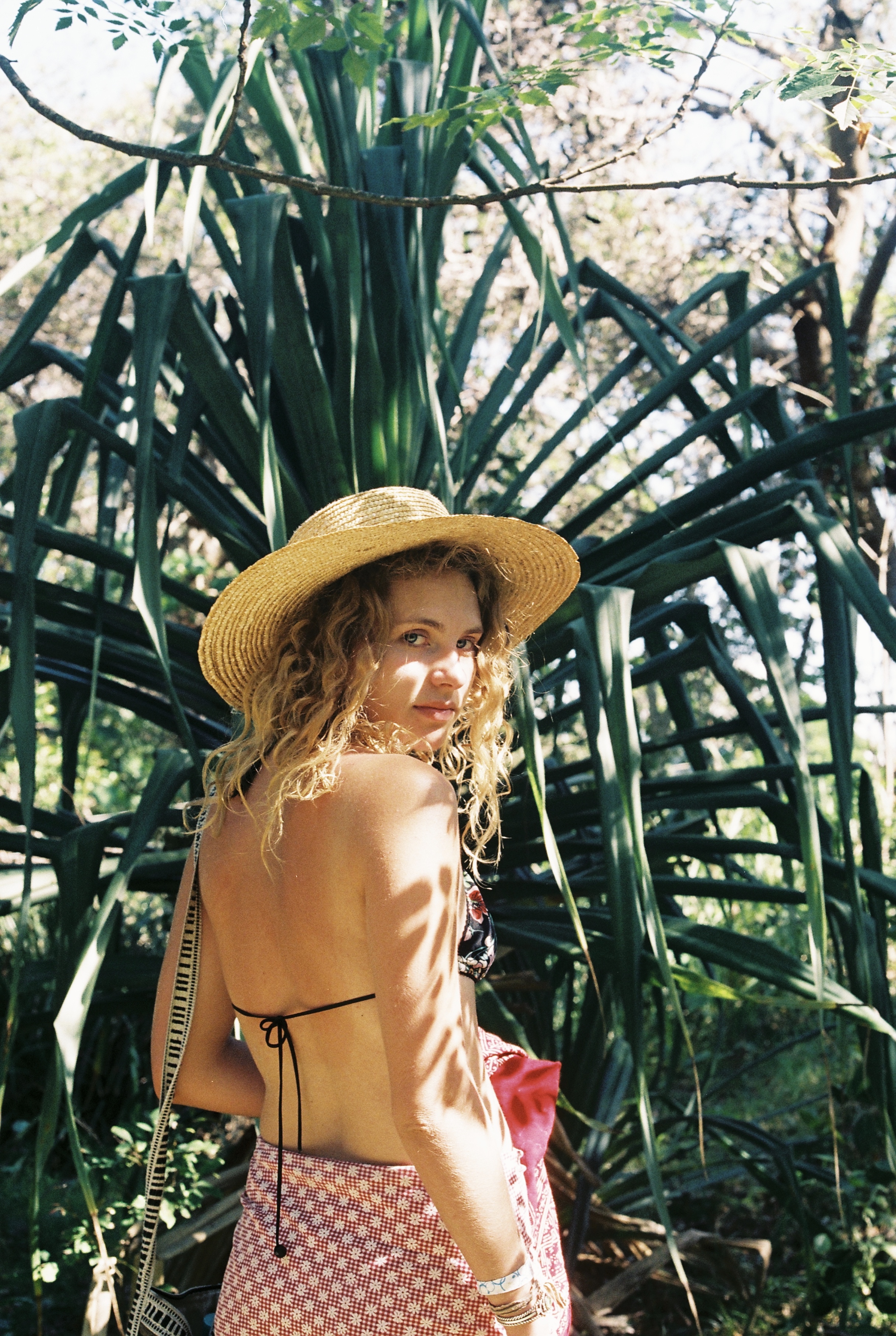
What’s the aim when people share their film photographs on Sydney to Santa Cruz? Do you give each other feedback?
No. I do the Instagram; my friend does the website. I go around and find different film photographers that I love and I reach out to them an ask if they would like to be featured on our website. Everybody’s trying to get their work out there. Especially film photographers because people say “film is dead.” It’s actually not. There are so many film photographers out there. They’re always excited to be on our website. It can be a one-time thing, or it can be recurring. We have a huge drive for them on Google.
Sydney to Santa Cruz is a collective of all these different photos and photographers, and it’s cool because you can go on and see what different artists see beauty in. They’re all so different.
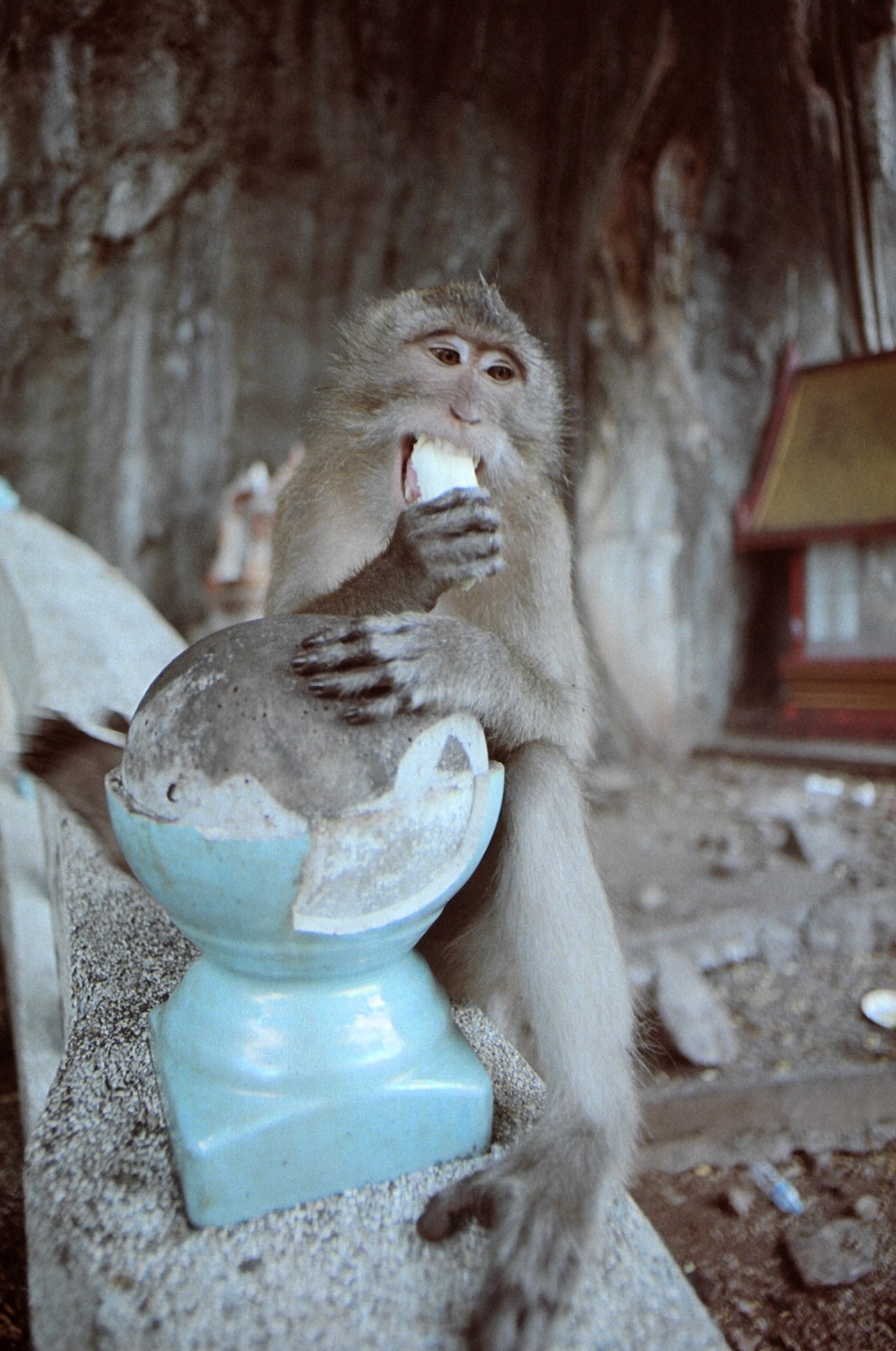
Tell me what makes you passionate about film photography.
It’s raw, to be honest. I feel so proud of myself when I get a roll back from the lab, because of all the effort I put in to make sure that photo came out perfect. The lining, the capture setting, how fast you’re taking the photo, where you’re taking the photo, how you roll up the film. There’s so much that goes into it. I am that much more excited when I do get a photo back. I see the effort that I put into it, but also just the photo itself.
A lot of editing goes into digital photography, which is totally fine. That’s what makes everybody’s photos unique. Film doesn’t need that. When I get the film back, I don’t try to adjust it at all.
Don’t you have to do that a little in processing it?
Yeah, you mean in the darkroom?
Yeah. I mean you’re still manipulating the whole product.
Yeah, I haven’t been in a dark room since I took that first photography class. I’ve just been going to labs. You’ll find one here and there and they develop it for me.
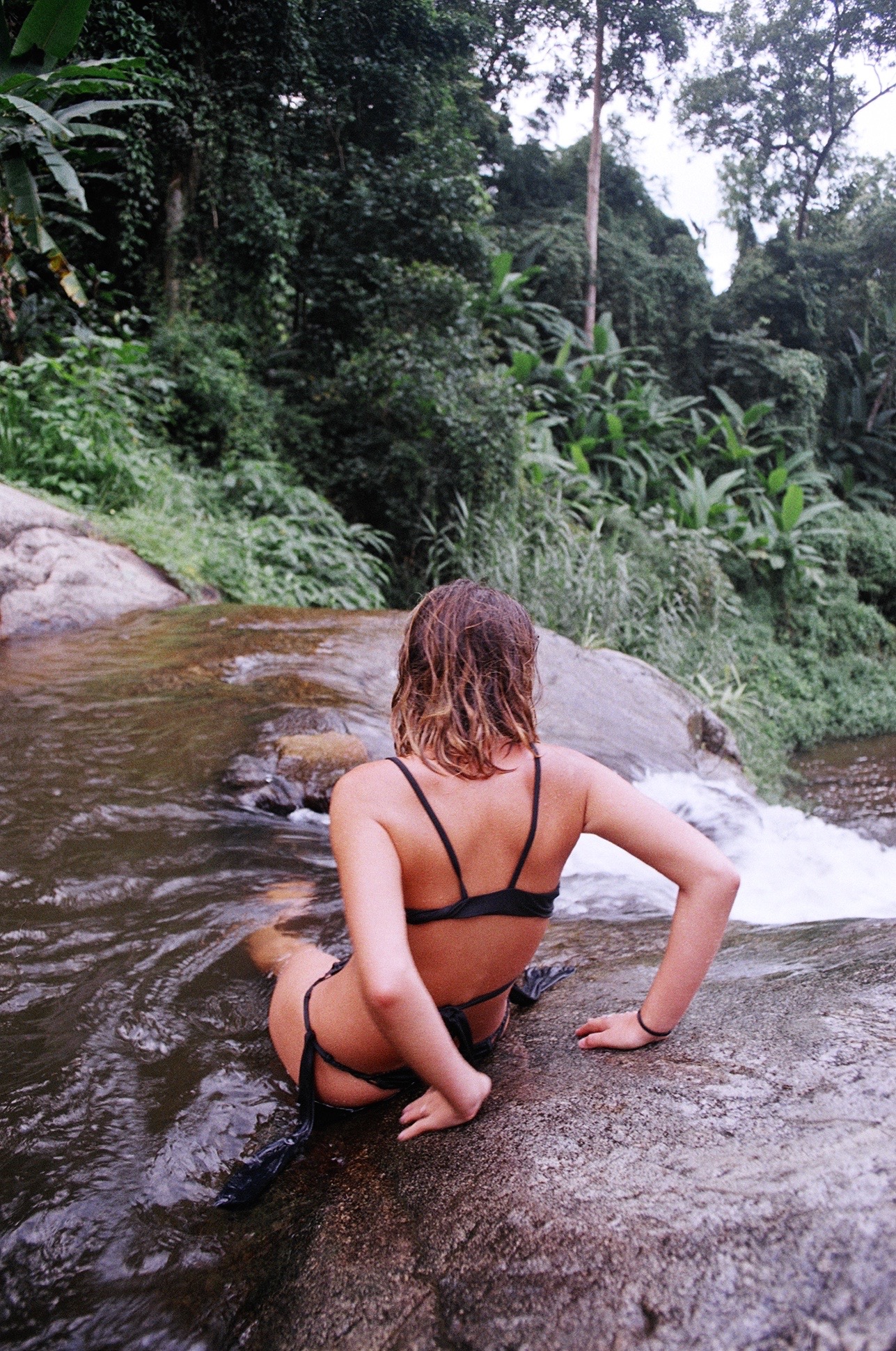
That makes it a legit risk to buy the film, go out, take all the photographs without the benefit of being able to have any sort of knowledge, necessarily, of what’s going to come back to you.
Exactly. I got back from my Thailand trip, and I took about 15 rolls of film. I can tell you that maybe four of them came out how I wanted them to. You get so frustrated because you don’t know what your photo is going to look like. You have an idea; then, you take it and see it when it’s developed. I lost most of my rolls on that trip to a big yellow streak that was either on the film or in their printer.
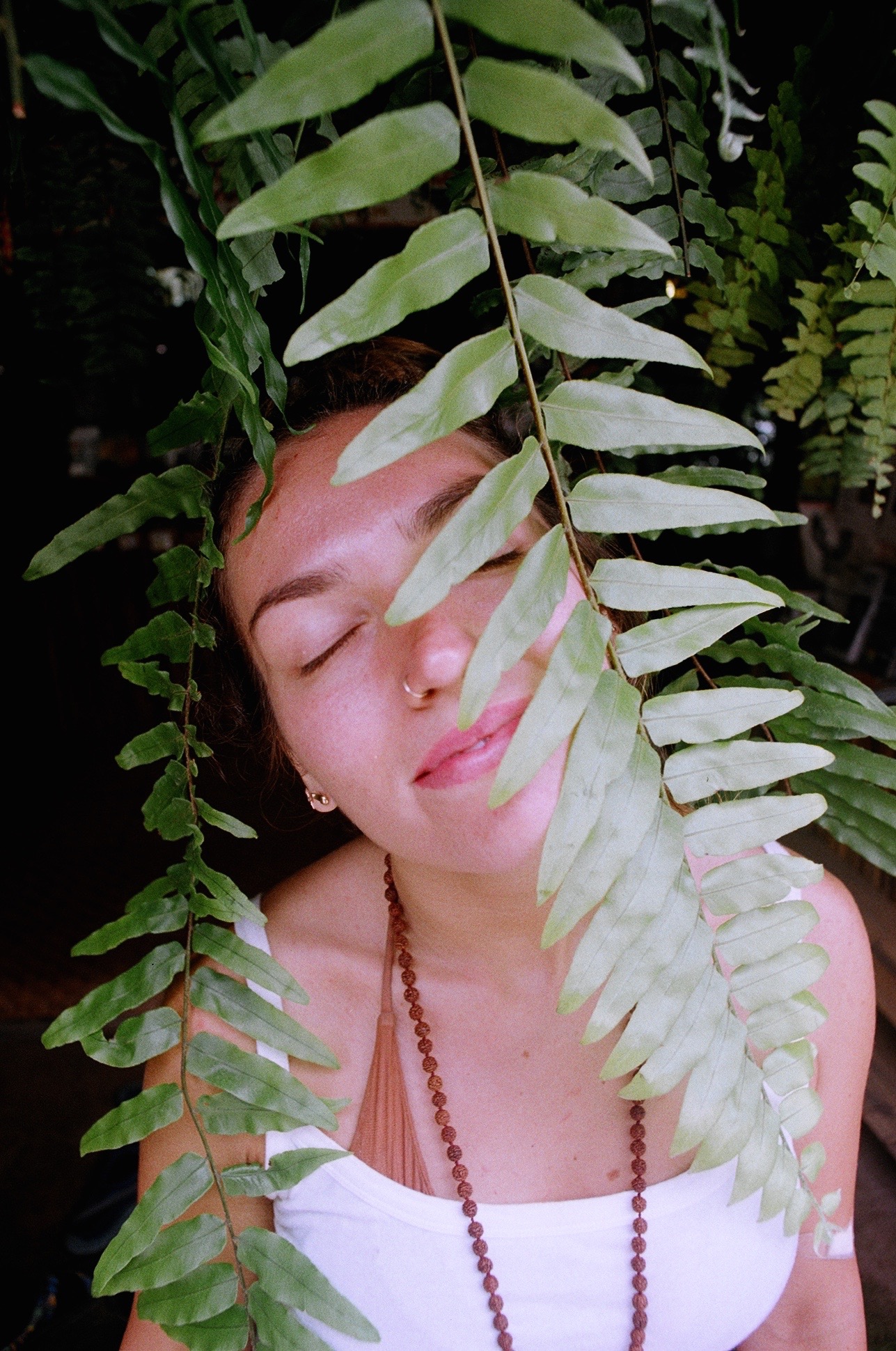
That’s the worst. I guess it makes the ones that worked even better. What kind of gear are you using?
I stick with Cannon AE-1. My first one broke when I was traveling abroad in Australia. I was off the Great Ocean Road, and it just stopped working. I literally thought my life was ending. Then, my phone died. I couldn’t take photos of anything. It was torture. I got to Melbourne, and I was running around trying to find a new camera or repair shop. It’s funny because you can buy these cameras for kind of cheap, like 100 dollars or so. To get them fixed is the price of another one.
As far as gear, I do have a backdrop for when I take portraits and the big headlamps. Not much though.
Okay, so that sounds like considerably less gear than having to haul a huge bag around with you.
Oh, yeah.
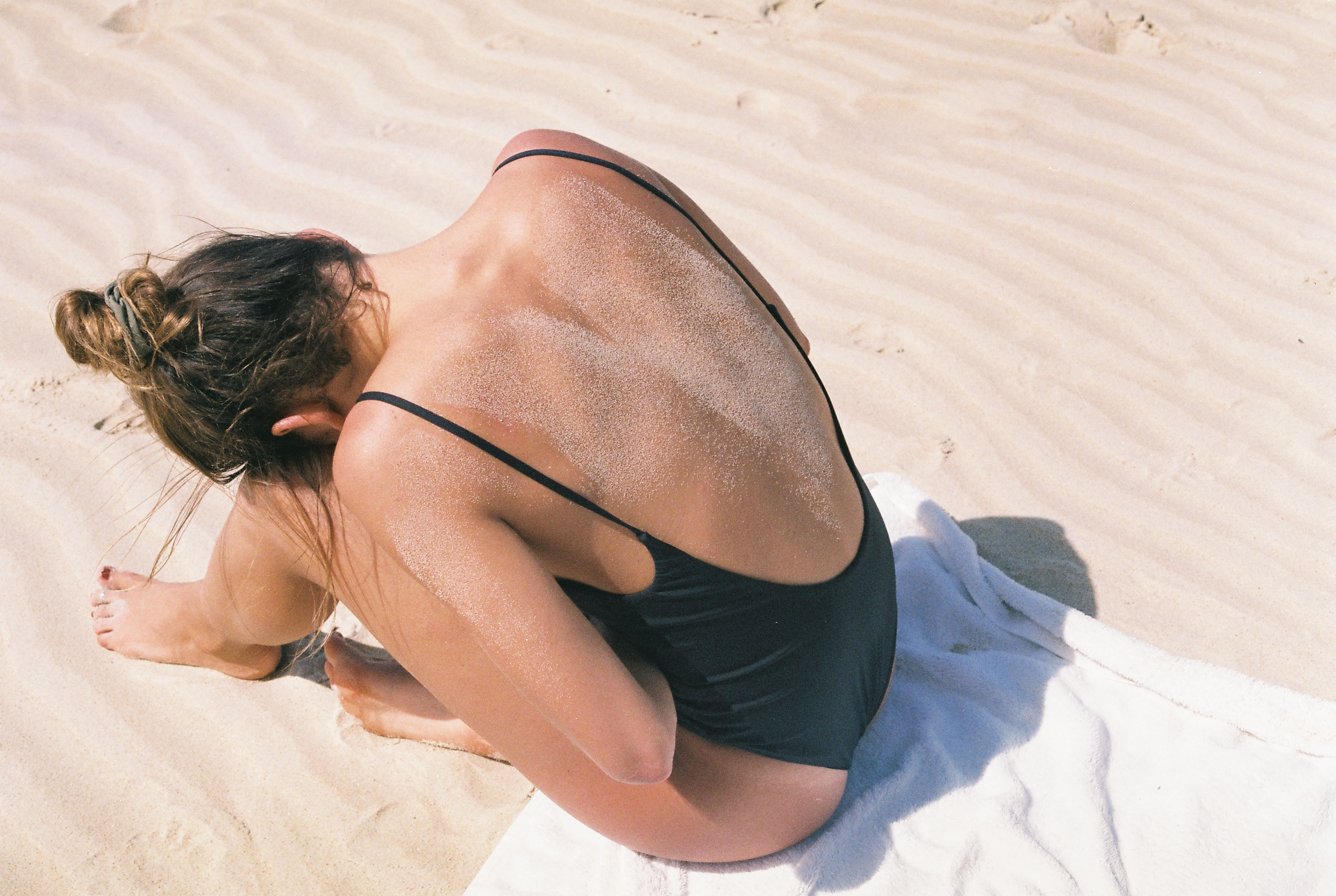
So, if you’re doing more lifestyle and travel photography, what kind of places have you been going? Obviously, Thailand and Australia.
Yeah. I was in Australia for about six months. Then, I traveled to Thailand for a little bit over a month. That’s where most of my photos are from right now. I just made this big switch when I got back in September. I decided I was going to dedicate my career to photography. I was originally going to be doing psychology. When I came back, I was taking all these classes. I had to do computer sciences and research methods. I didn’t feel connected to my creative side. I was freaking out. One day, I woke up and decided “I’m not doing this.” I switched over to an art major. Now, I’ve been focusing on photography classes.
I was just all around Australia. Sydney. Melbourne. I started in the islands of Thailand and made my way up all the way into the North. Quite an experience.
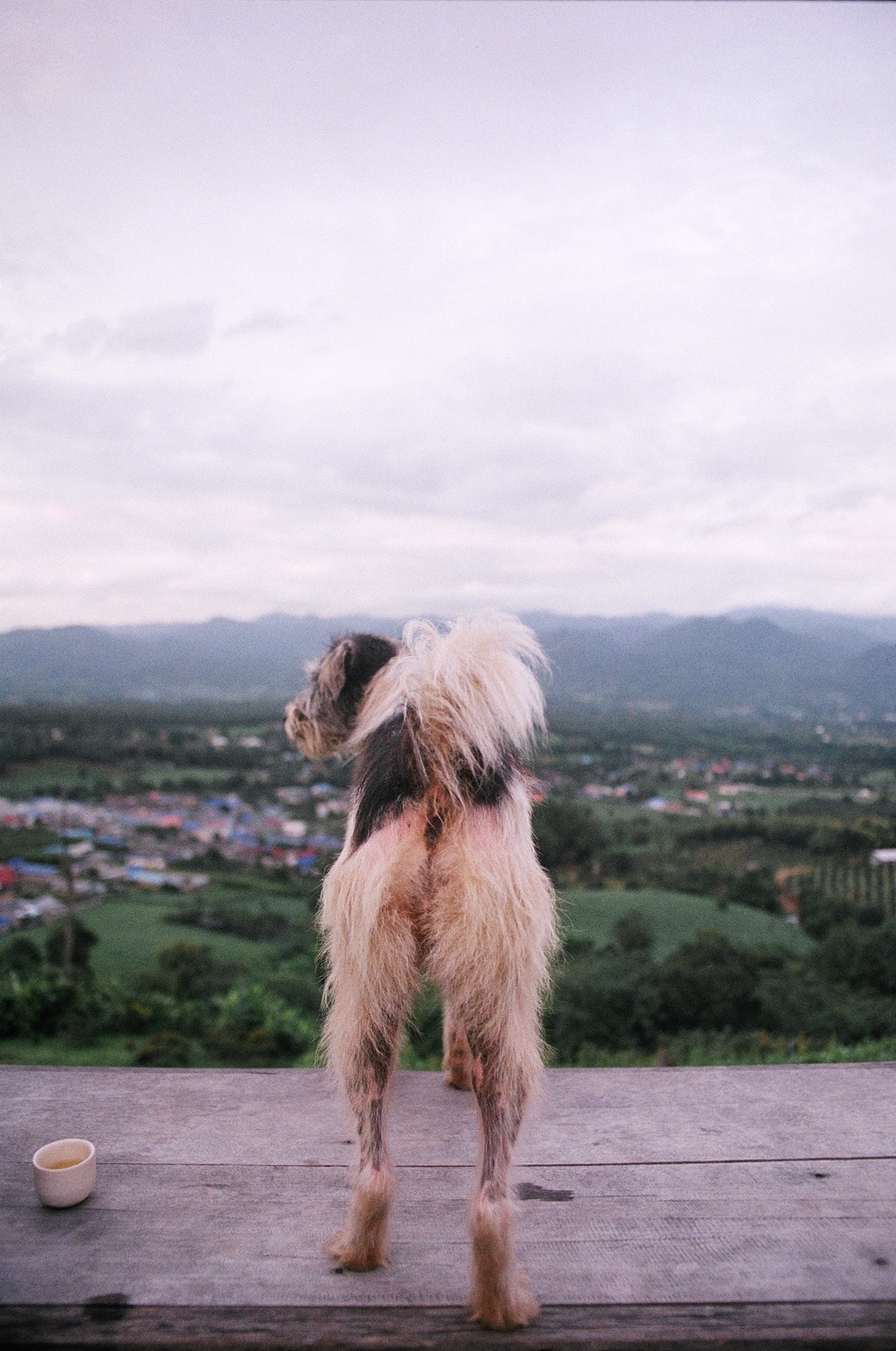
Were there some photography moments from the trip that stand out? I saw one that caught my eye: A happy little dog butt.
Yeah, that was in Pai. It’s this little village in the north of Thailand. It’s a super hippie village. Not a lot of backpackers know about it. They have loads of cafés, and a lot of my photos from Thailand in this series are from that village.
One day, we were on a moped driving around town. We went up to the Pai Mountain and found that lookout. We got there and met the owner of the property. He allows anybody to come in, but you have to buy tea (he makes pots). The adventure crew that I was with sat there and watched the sunset go down overlooking the Pai Valley. It was absolutely incredible. That dog was one of his.
What a nice moment. It’s a picture of an adorable dog, but your story makes it so much more.
Yeah. That’s the secret about photography, too. What I can’t say in words, I say through my photography. I’m definitely a nostalgic person. Those photos are cherished so much because they have so many memories within them, definitely.
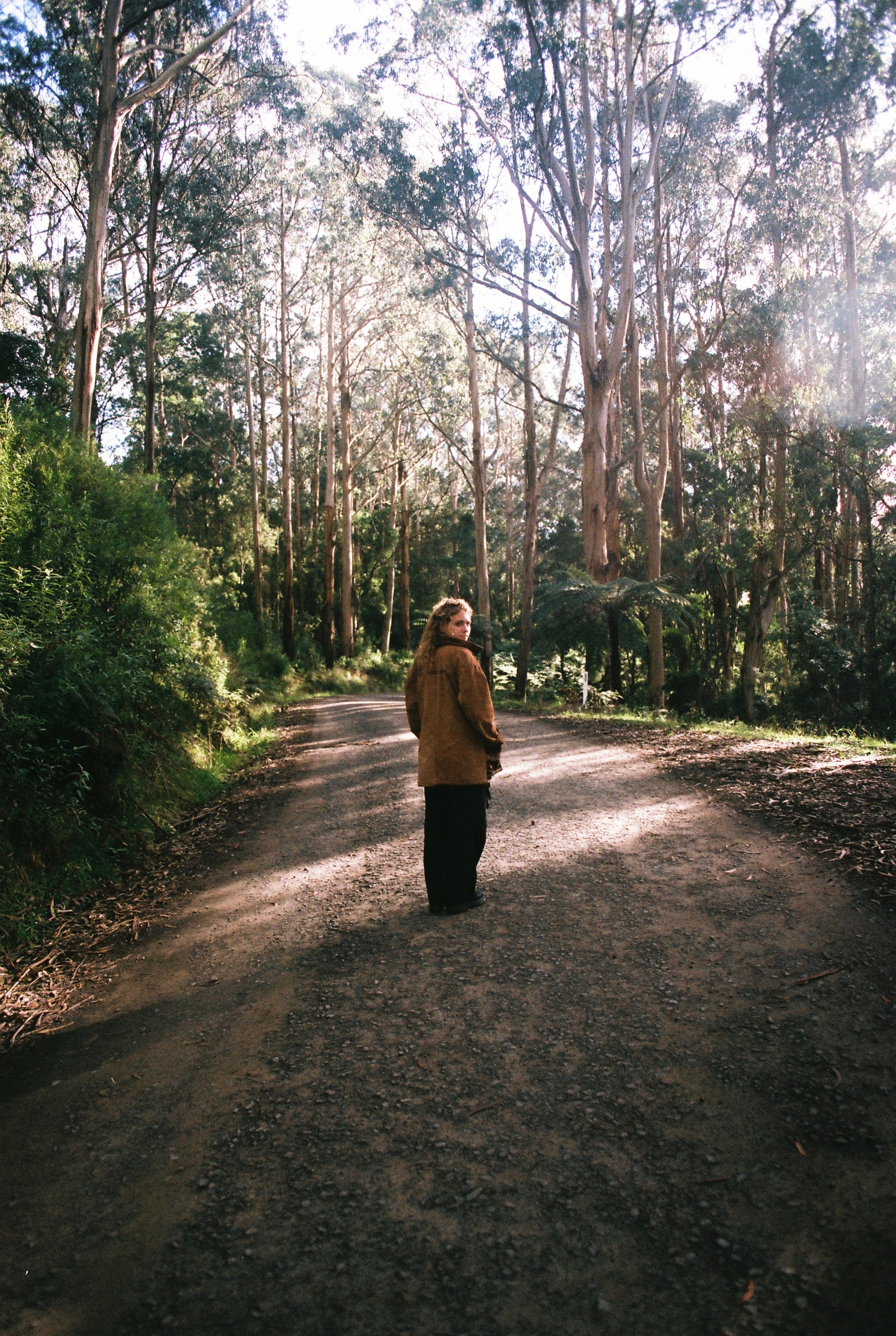
That’s sort of interesting about photography, isn’t it though? So you’ve captured an image. For you, that image is like a distilled memory. A little genie bottle with memory juice in it, but then you put it out in the world and everyone else who accesses it gets the sort of flavor of your memory, but they assign all of their own meaning to it.
So true. Yeah, yeah.
It’s really weird because they are kind of like your babies going out into the world.
Exactly. I put a lot on Instagram. That can be considered, in some cases, a problem because people only put out their best photos and that leads to comparisons that can make you feel weird.
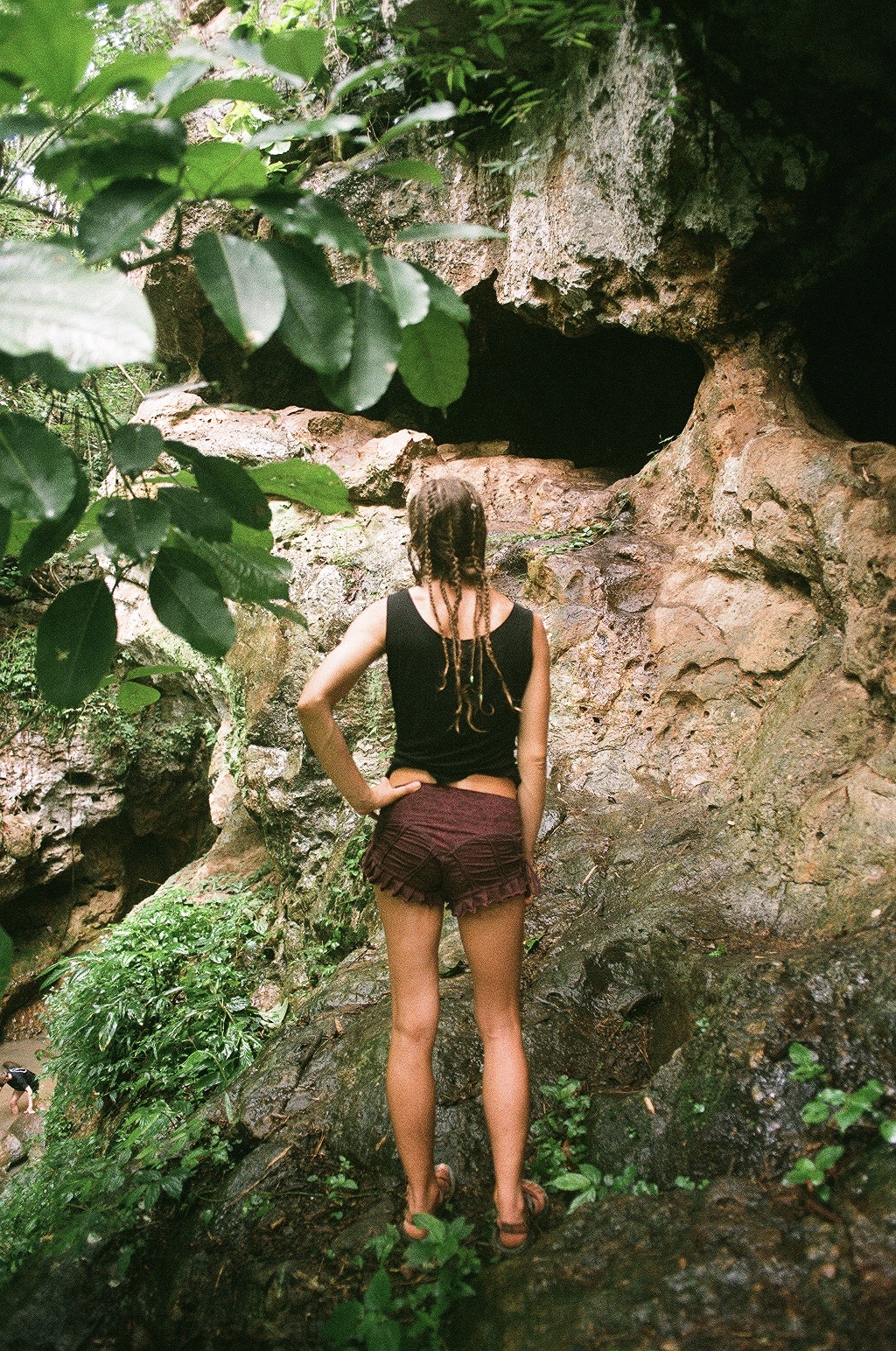
Are you in any of these pictures, or are all these the people in your adventure crew?
I am not in any of my photos. Even on my Instagram. I just posted my first photo of myself a couple days ago. My mom gets so mad at me. I don’t like people taking photos of me. It’s weird when I do see a photo of myself. I’m like, “Is that really what I look like?”
Yeah, the photos are mostly of just my friends and people I have come across while I’m on my travels. The girls.
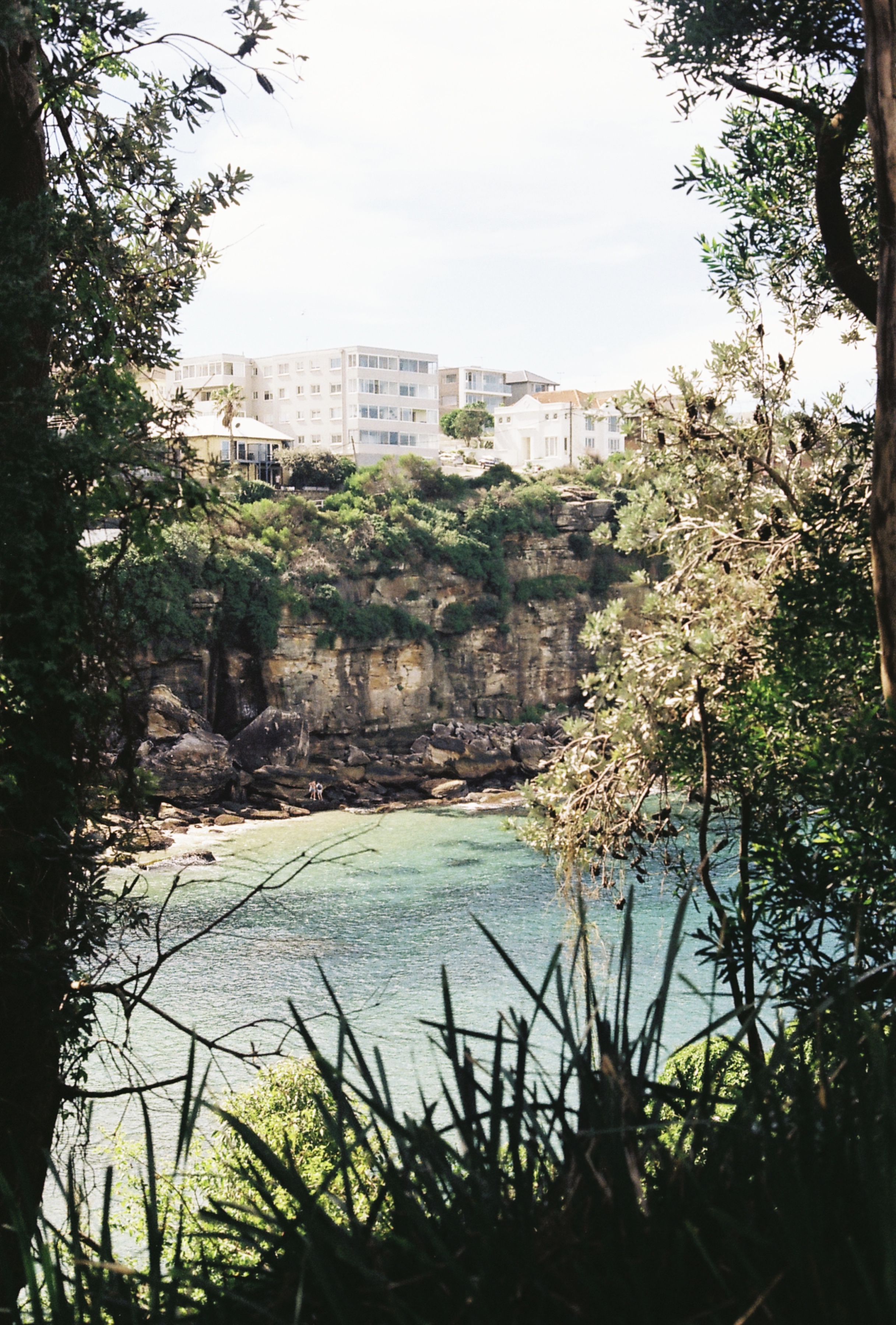
Yeah, they’re all girls.
That’s another thing I noticed in my work. There’s a lot of women. One of the classes I’m taking this quarter is about community and diversity. I’ve become passionate about how femininity and sexualization and oppression of women is so deeply rooted in our global culture.
I’m always taking pictures of women. We’re just awesome.
The pictures themselves aren’t overtly sexual.
I’m going through a bit of a creative rut right now. It’s annoying it, but I know that it’ll come back to me. I’m trying to figure out ways to depict a woman’s body without a sexual orientation. If you think about it, it’s almost impossible. Not impossible, but tricky because of how women have been depicted for ages.
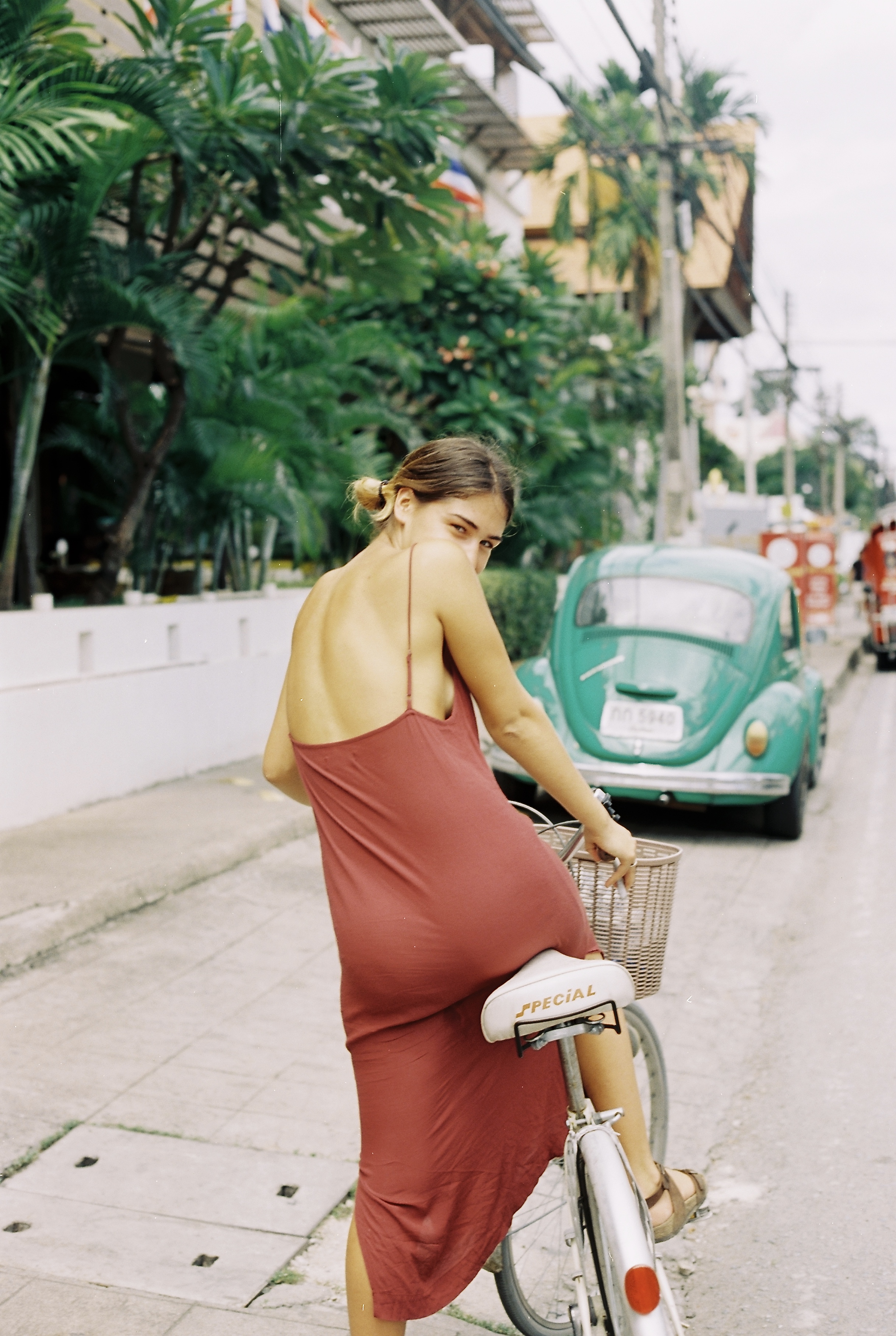
What do you have coming up for you in the future? If you’re in an artistic rut are you going to go travel or shake things up?
That is the plan. I leave to go home tomorrow, and then, I’ll be going up north to Tahoe for a little bit over a week or so. I think that your environment is the story, getting out there. That’s been a lot of my inspiration. When I came back from my travels, I was so frustrated with myself because I didn’t have this need to pick up my camera. I called my Aunt and Uncle, who are photographers themselves, and they were like, “You’re not always going to like your ideal environment. Half the challenge is still being able to find inspiration, regardless, in little ways.” I’m working on that.
